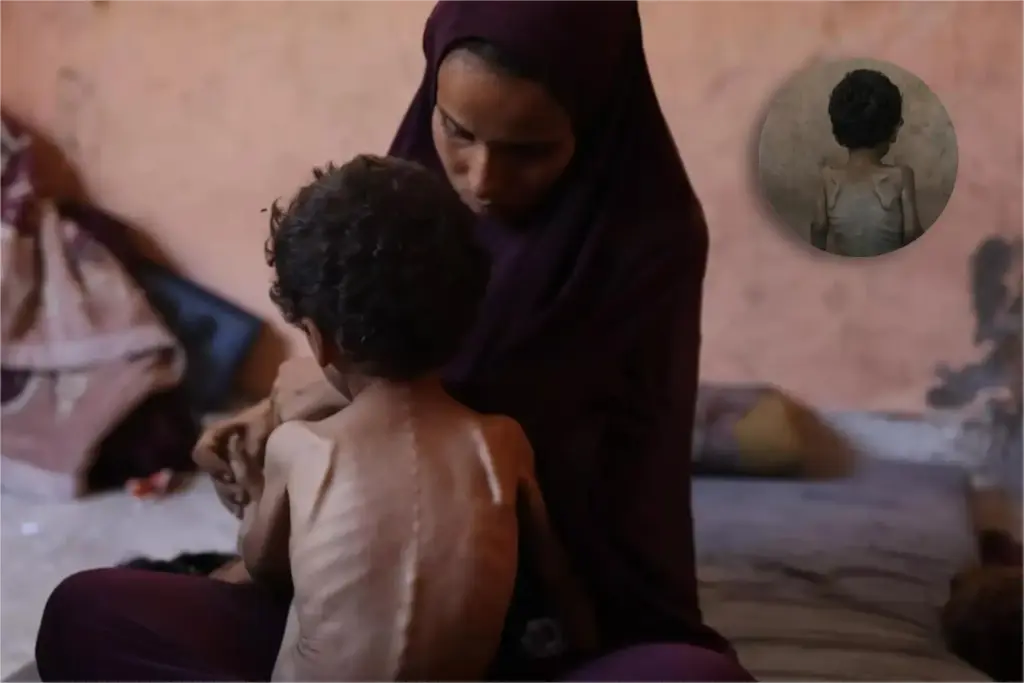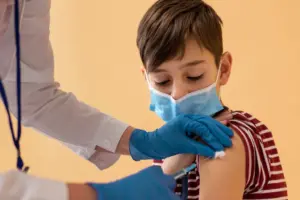
Gaza malnourished: A new analysis from the UN Relief and Works Agency for Palestine Refugees (UNRWA) estimates that more than 54,600 children under five in Gaza are acutely malnourished, including over 12,800 with severe acute malnutrition, after two years of conflict and sweeping shortages of food and medical supplies.
Published Wednesday in The Lancet, the study is the most extensive assessment of child hunger in Gaza to date. Using screenings from nearly 220,000 children at dozens of health sites between January and mid-August 2025, UNRWA found that by early August, about 16% of children aged 6–59 months met criteria for acute wasting, with nearly 4% severely wasted, a life-threatening condition that typically requires weeks of therapeutic feeding and, in some cases, hospital care.
Also Read | Gaza’s last cancer hospital shuts down after Israeli strike: WHO
“Tens of thousands of preschool-aged children in the Gaza Strip are now suffering from preventable acute malnutrition and face an increased risk of mortality,” said lead author Dr Masako Horino in a statement. An accompanying commentary by independent experts from Columbia, Stanford and Aga Khan University called the findings “some of the most definitive evidence” yet of widespread child hunger and urged immediate, sustained humanitarian access.
Patterns tied to aid access:
The analysis shows wasting rates eased during periods when aid flowed, including a six-week ceasefire in early 2025, and worsened when supplies were curtailed. Israel has intermittently restricted aid entry during the war that followed Hamas’s October 7, 2023, attacks; Prime Minister Benjamin Netanyahu has rejected reports of starvation as “lies.” UN agencies and aid groups say children and pregnant women have been hit hardest by prolonged shortages and disrupted distribution.
Gaza’s health ministry reports 461 deaths from malnutrition complications, including 157 children, mostly in 2025. Hospitals, facing scarce stocks of therapeutic foods, remain overwhelmed.
How the survey worked:
Trained nurses measured mid-upper arm circumference (MUAC), a standard proxy for acute malnutrition. Arms <125 mm (4.9 inches) indicate wasting. The authors caution that conflict conditions limit perfect surveillance but say the large sample size strengthens confidence in trends.
Aid shipments and risks:
US-based nonprofit Edesia said it shipped 1,500 boxes of therapeutic food on Sept. 28 and plans nearly 15,000 more boxes by air and sea over the next month. A US-Israel distribution model launched in May channels aid through four hubs that require civilians to pass Israeli military lines; the UN says over 1,000 Palestinians have been killed in and around those sites since May. Two staff tied to the screening program are among 21 UNRWA health workers killed in Gaza; the agency reports more than 370 staff deaths overall.
The findings follow an August determination by the Integrated Food Security Phase Classification (IPC) that parts of Gaza have entered famine, after months of warnings that hundreds of thousands faced catastrophic hunger, an assessment previously delayed by limited access and data.








